A Guide to Visiting the Ecuadorian Amazon
A trip to the Amazon Rainforest is a must if you’re in one of the nine countries that the jungle stretches across in South America. Since we didn’t have time to visit the Amazon in Peru, we knew that we couldn’t miss this once-in-a-lifetime experience when we were in Ecuador. In this blog post you’ll find answers to common questions you may have before visiting the Ecuadorian Amazon.
We had loads of questions prior to our visit, which we’ve tried to answer as completely as possible in this post so you don’t have to browse through too many articles. Of course, there are a few different regions where you can enjoy being in the Amazon Rainforest in Ecuador. In this guide we’ll be focusing on Cuyabeno Wildlife Reserve, which we’ve personally visited. However, based on our initial research, most of our answers are still applicable if you’re visiting another part of the Ecuadorian Amazon.
We’ve also put together a post about what to expect from a typical visit to the jungle and a summary article on all the activities you can do in Cuyabeno Wildlife Reserve. In addition, there’s also our useful guide on how to get to Cuyabeno from Quito.
If you’d like to see our Amazon Rainforest adventures, then check out our dedicated Amazon video on our YouTube Channel. For more Ecuador videos check out our Ecuador Playlist.
Disclosure: This post may contain affiliate links, which means we may receive a small commission if you click a link and purchase something. Clicking these links won’t cost you anything, but it will help us to keep this site up and running! Learn more about our affiliate policy.
About the Amazon Rainforest
Covering a staggering 2.5 million sq miles across South America, the Amazon Rainforest is the largest rainforest in the world. Spanning nine countries, it’s often referred to as the “Lungs of the Earth” because it produces more than 20% of the world’s oxygen.
The rainforest is home to thousands of different species, from snakes and spiders, to monkeys and even dolphins. This makes the Amazon one of the world’s richest and most-varied ecosystems. More than 400 different indigenous groups also call the rainforest home.
Unfortunately, as we’re all aware, the Amazon faces many threats such as deforestation for agricultural expansion, illegal and often unsustainable natural resource extraction, and of course climate change.
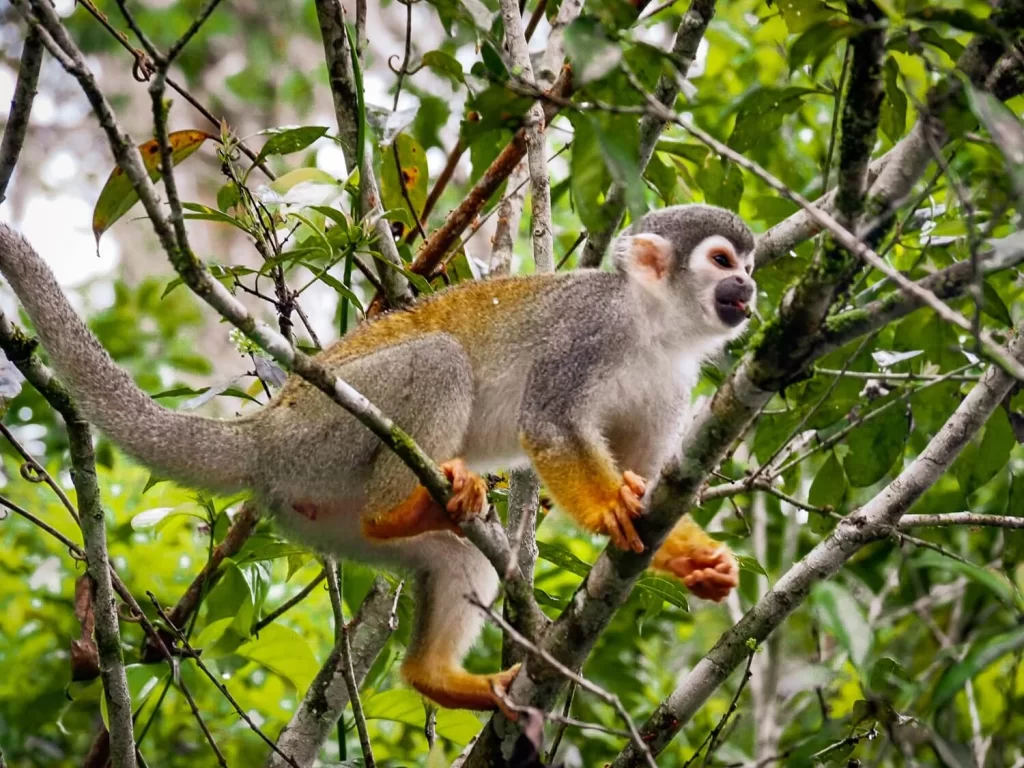
Ecuadorian Amazon Rainforest
42,000 sq miles of the Amazon Rainforest is located in Ecuador and is known as El Oriente which means ‘the East’. Whilst it may seem tiny compared to the Brazilian Amazon, it’s just as diverse. You can find at least 800 species of fish, 350 species of reptiles, over 300 species of mammals, and thousands of plants and insects. In addition, Ecuador has over 1,600 species of birds, many of which are found in the Amazon.
It is also where you’ll find the biggest national park in Ecuador: Yasuní National Park. It is known as one of the richest biodiversity areas on Earth. However, there are other sections you can visit within the Ecuadorian Amazon, such as Cuyabeno Wildlife Reserve, which are just as diverse.
We actually had the chance to learn a bit more about the Ecuadorian Amazon Rainforest when we visited Mitad del Mundo and Intinan Site Museum in Quito.
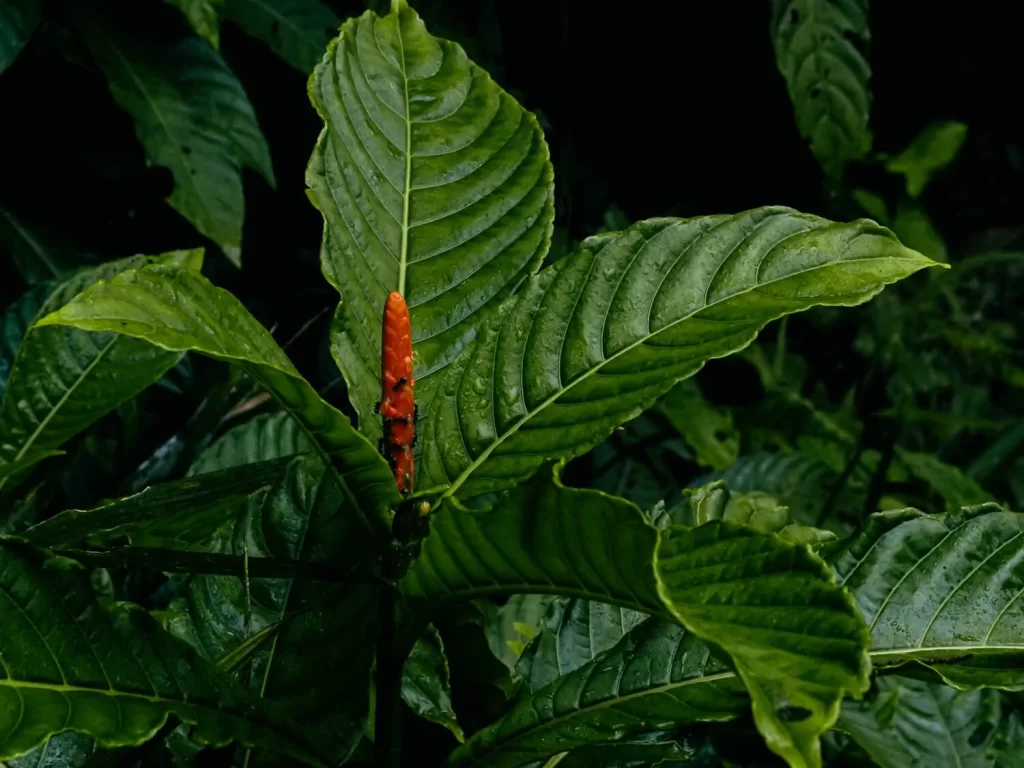
About Cuyabeno Wildlife Reserve
Cuyabeno Wildlife Reserve is located in the northeast corner of the Ecuadorian Amazon in the provinces of Sucumbios and Orellana, close to the foothills of the Andes. The reserve belongs to the National Protected Areas System.
It’s a biodiversity hotspot with over 540 species of birds, 350 species of fish, hundreds of reptiles and amphibians, and 165 species of mammals. So there’s a very high chance that you’ll be able to spot pink river dolphins, caiman, anacondas, or Hoatzins, commonly known as the ‘stinky turkey’. In addition, there are over 12,000 species of plants in Cuyabeno.
For this reason, visiting Cuyabeno in the Ecuadorian Amazon is a fantastic option if you’re travelling in Ecuador.
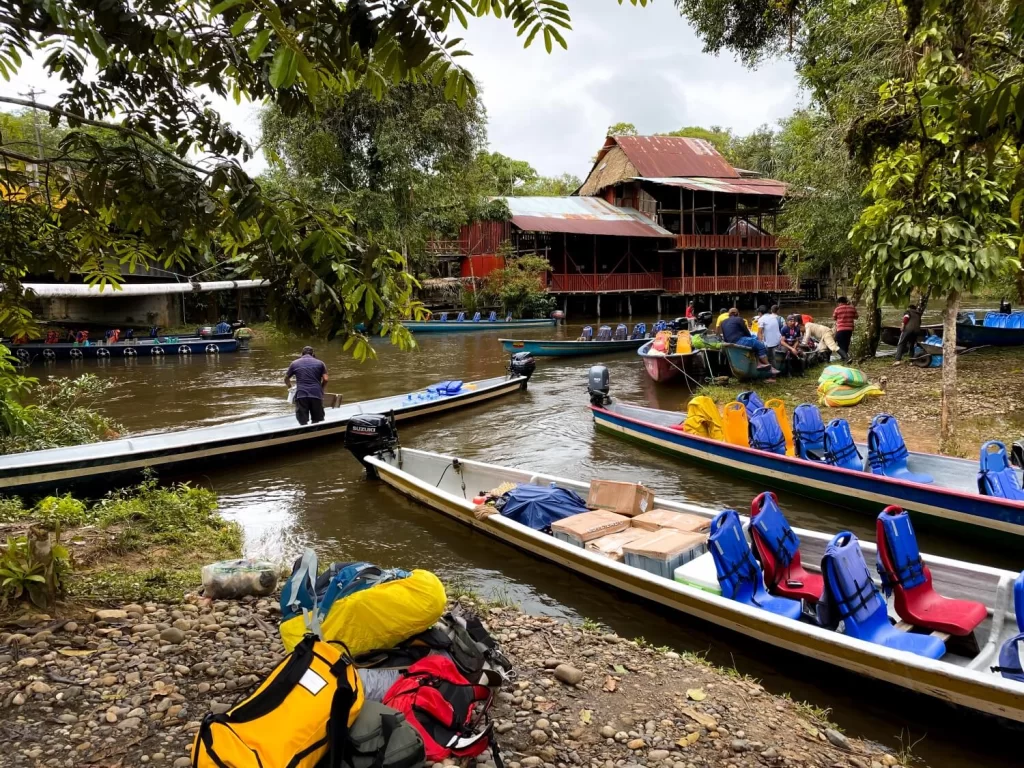
How to Get to the Ecuadorian Amazon
No matter which part of the Ecuadorian Amazon you’re planning on visiting, you’ll have a long travel day ahead of you. For example, when you look at the map, the distance between Quito and Cuyabeno might not look that great. However, the two locations are nearly 400 km (~250 mi) apart. The lodge we stayed at in the Amazon Rainforest is definitely the most remote location we’ve been to so far. It took us a long time and a few different modes of transport to get there.
The journey to Cuyabeno Wildlife reserve from Quito can be split into two main parts:
- Quito to Cuyabeno Bridge (Puente Cuyabeno),
- Cuyabeno Bridge to your lodge in the wildlife reserve.
We’ve put together a detailed blog post on all the different ways you can get to Cuyabeno Wildlife Reserve from Quito. Make sure to give it a read before your visit.
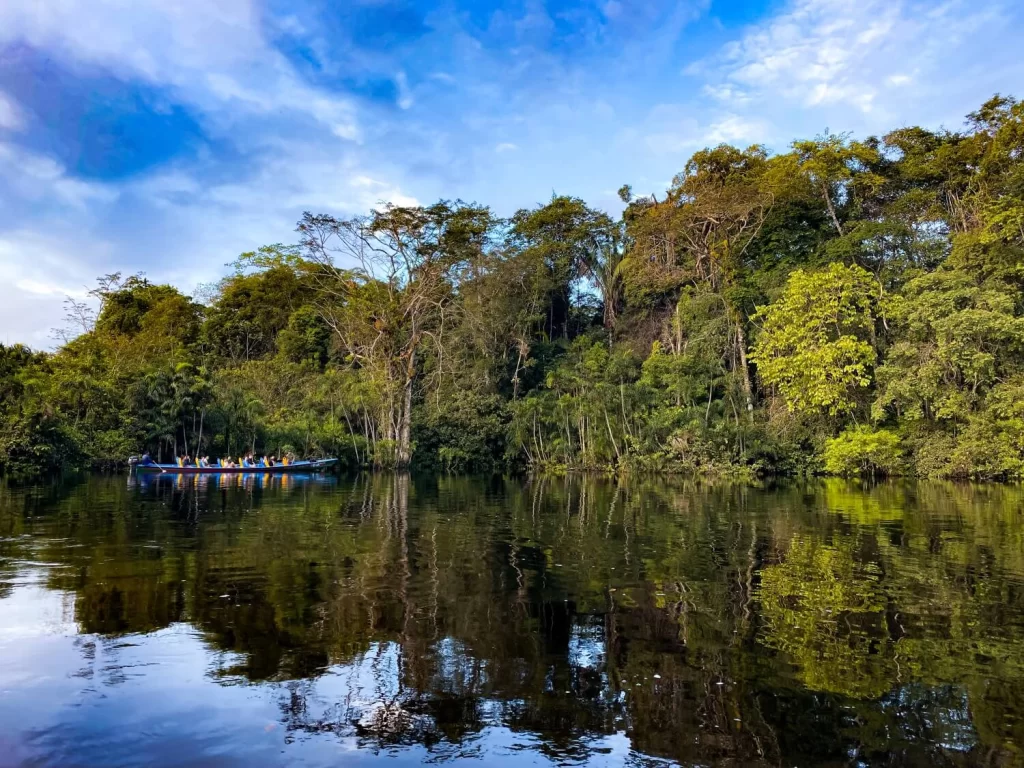
Best Time to Visit the Ecuadorian Amazon
You can visit the Amazon Rainforest in Ecuador at any time of the year. However, it’s good to know that, although it’s called a rainforest, it still has two seasons: dry and wet.
The dry season in Cuyabeno is from December to February. During this time the Cuyabeno River can decrease massively. Sometimes, Laguna Grande, the huge lake that many of the lodges surround, completely disappears. Don’t worry, you can still see plenty of wildlife in the dry season. However, it’s good to know that some animals, such as pink river dolphins, would migrate to another area. On the other hand, there are going to be less mosquitos.
During this time the temperatures are also much hotter with the average temperature reaching 35 C / 95 F. It might feel slightly less humid though.
The rainy season is between March and November with May and June having the most rainfall in the Amazon. In the wet season more of the jungle will be accessible by canoe thanks to the increased river levels. The average temperature is 24 C / 75 F in the rainy season. The best perk of visiting the rainforest during this time is the potential to see a lot more wildlife.

Vaccination Before Visiting the Ecuadorian Amazon
We highly recommend consulting your local GP before travelling to the Amazon Rainforest and discuss what vaccinations you might need during your trip.
From our personal experience, it’s always good to be up-to-date with some routine vaccinations. On top of that, there are certain jabs your doctor will encourage you to have such as Hepatitis A, Typhoid and Hepatitis B. The first two are good in case you eat or drink any contaminated food or water. The Hepatitis B vaccine is also recommended in case you get an infected cut and need medical assistance.
In terms of malaria, Ecuador’s malaria map shows a low risk of malaria for most of the country. Now, protection against mosquito bites is still very important. There is still the risk of Zika and Dengue fever, both transmitted to humans by mosquito bites. We recommend consulting with your GP if you wish to take tablets.
Another one to consider is the Yellow Fever vaccine. CDC and NaTHNaC says that vaccination is recommended if you’re travelling to Morona-Santiago, Napo, Orellana, Pastaza, Sucumbios and Zamora-Chinchipe, and the province west of the cordillera, Esmeraldas. This includes the Amazon Rainforest.
There are some useful websites, such as CDC and NaTHNaC, where you can read about potential diseases and vaccinations.
Top Tip – Make sure to always have travel insurance, because you just never know what could happen during your trip. We personally use SafetyWing, which offers a high level of coverage at a more affordable price than most other insurers.
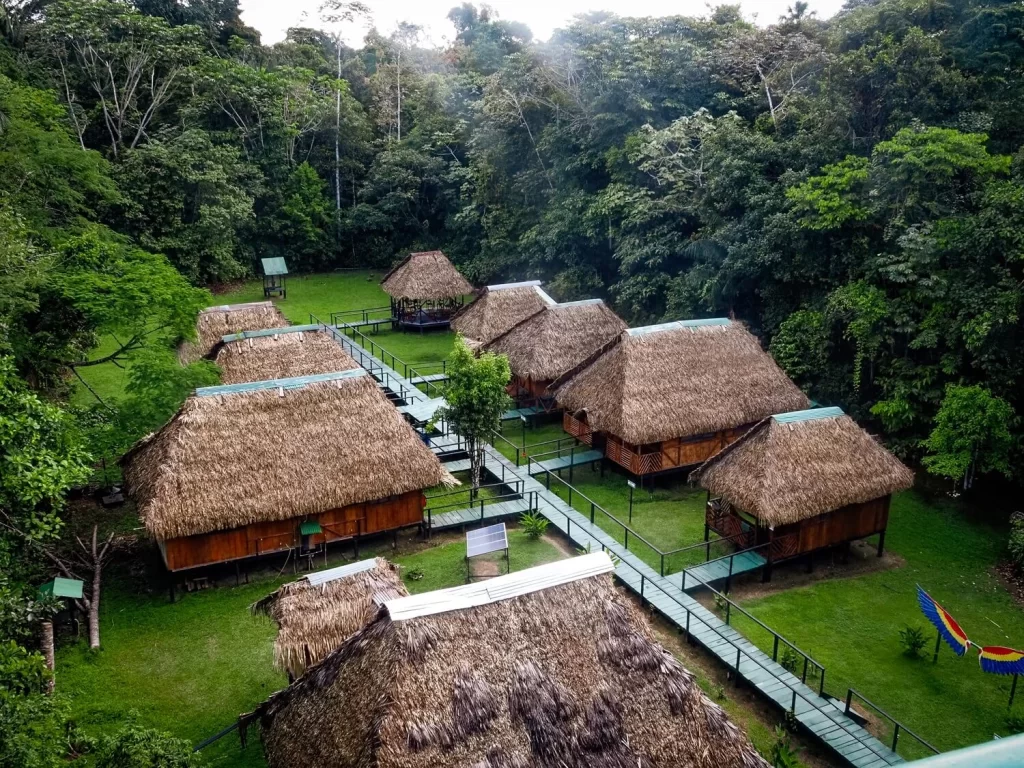
Cost of Visiting the Ecuadorian Amazon
The price for an Amazon Rainforest tour will vary depending on a few factors such as length of stay, whether you want private or shared accommodation and what’s included. During our research we noticed that tour prices in Yasuní National Park were more expensive than in Cuyabeno Wildlife Reserve. Below we’ll detail the average Cuyabeno prices, but expect to add on a good $100-150 USD more for Yasuní National Park.
You can normally choose between a 3-day, 4-day or a 5-day tour. The most popular ones are the 3 or 4 day tours which can cost between $250 to $350. Now, shared rooms are always going to be cheaper, but you’ll have to pay extra for private rooms.
Make sure to read what’s included in your tour package. Normally lodges will include all meals, activities, excursion equipment such as wellies and rain ponchos, mosquito nets and transport between Cuyabeno Bridge and the lodge.
However, you’d need to pay extra for things such as:
- Transport to Cuyabeno Bridge from Quito (~$40 return for the ‘tourist’ bus);
- Any meals that aren’t included;
- Alcoholic beverages;
- Tips for guides and staff; and
- Community contribution ($10 per person + cost of purchasing any handicrafts).
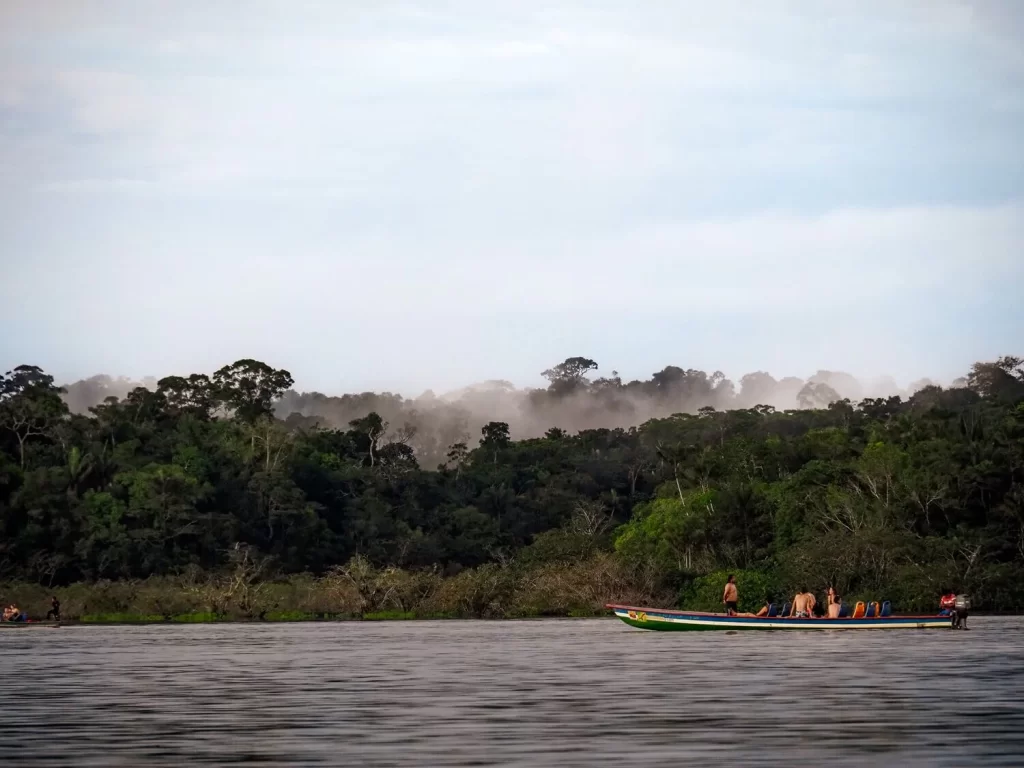
How Long Should You Spend in the Amazon Rainforest
Most tour packages in Cuyabeno offer either a 3 day / 2 nights, 4 day / 3 nights or 5 day / 4 nights option.
If you’d like to get the most out of your visit, then book either the 4 or 5-day long tour. This way you’ll be able to do all the main activities Cuyabeno Wildlife Reserve has to offer. During our research, we noticed that on the 3-day tour you may not have time to visit the local community. When you think about it, with the 3-day tour you’ll only really be spending 1 full day in the jungle which isn’t really enough in our opinion.
We personally went with the 4 day / 3 nights option, which gave us 2 full days in the rainforest. The only difference between the 4 day and 5 day options would’ve been a dedicated canoeing activity.
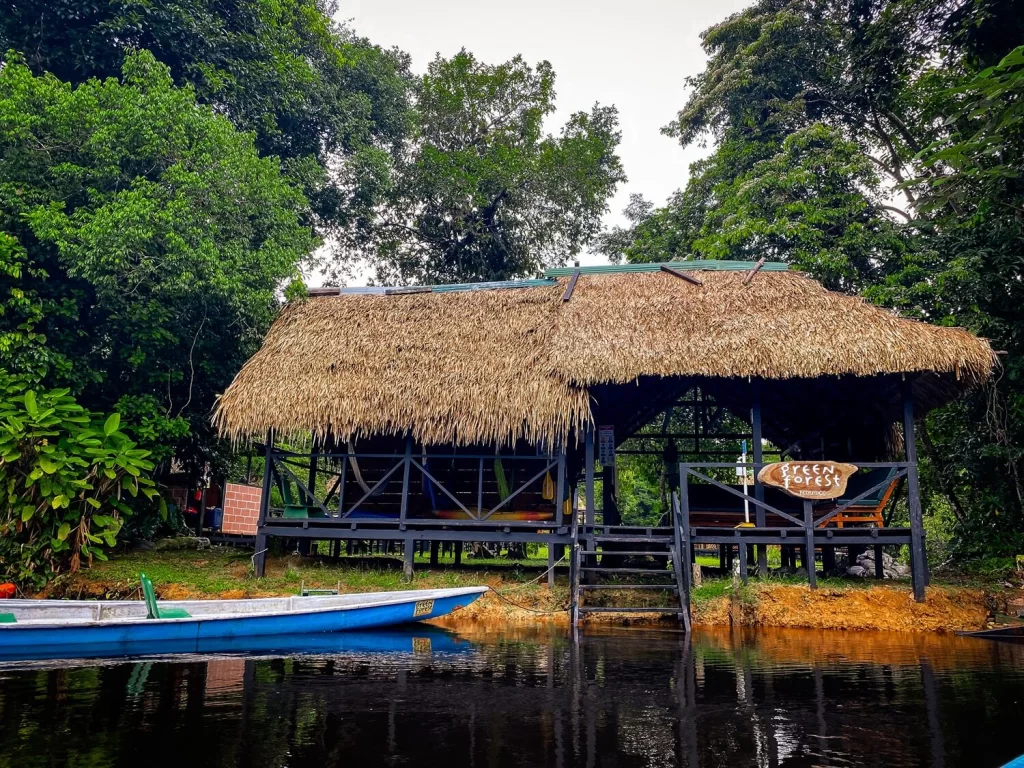
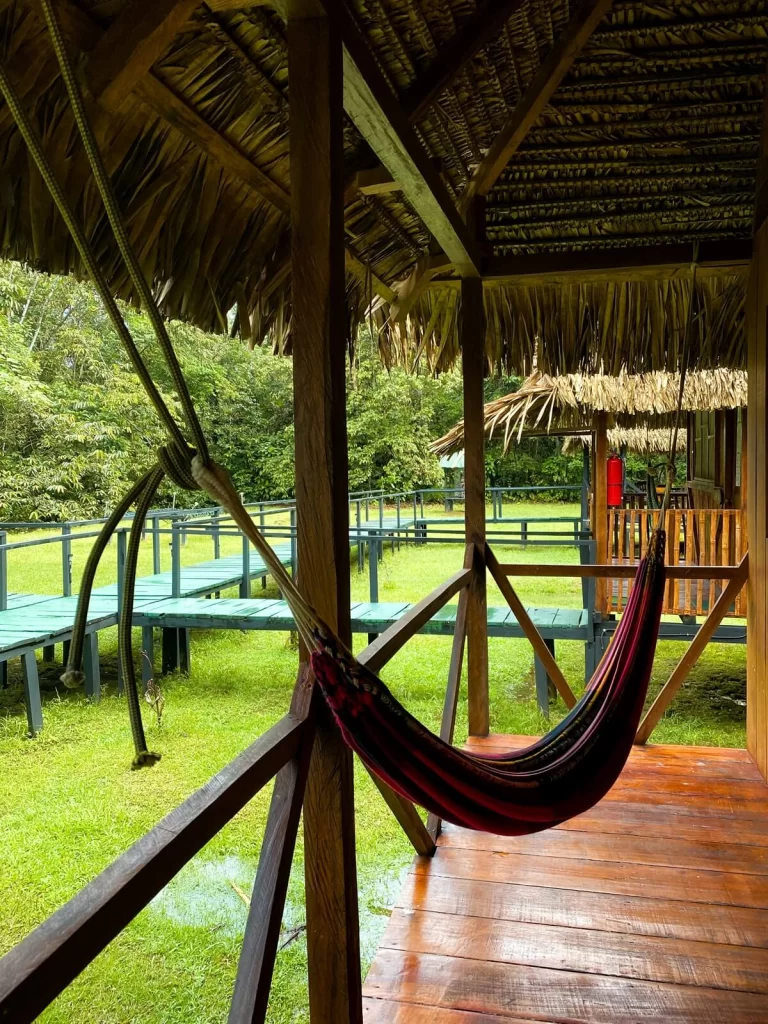
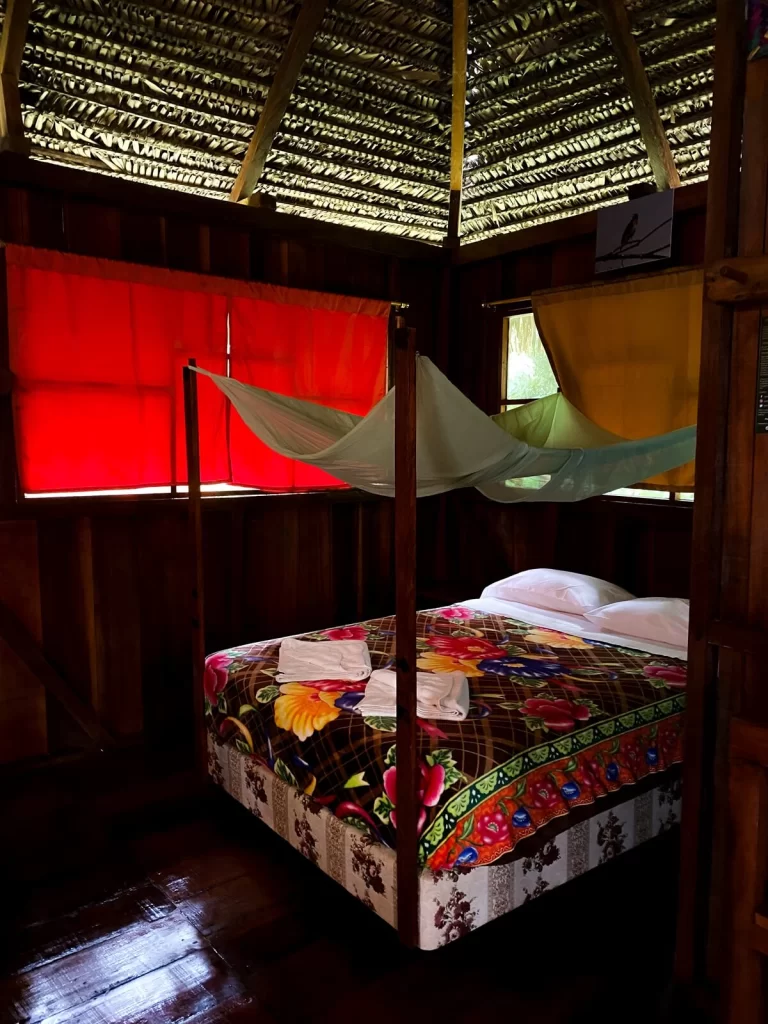
Accommodation in the Ecuadorian Amazon
When visiting the Ecuadorian Rainforest, you’ll most likely be booking a stay in one of the eco-lodges. However, there are tours where you can stay with a local family for a few days if you want something really authentic.
If you’re heading to Cuyabeno and booking a lodge, then you can choose to stay in a private or shared room. Obviously private rooms will be more expensive. We booked a private ‘matrimonial’ room that came with 1 double and 2 single beds, so was effectively a ‘family’ room.
The rooms are normally nice and comfortable. It depends on the lodge but most will have an en-suite bathroom. You’ll also have mosquito nets around your bed which we highly recommend using at night.
Normally, most lodges have a communal area where you’ll have your meals. They also usually have a long wooden dock and viewing platform. You can spend some of your downtime there relaxing in one of the hammocks overlooking the river.
We thought the accommodation felt similar to the American summer camps we used to work at in our twenties.
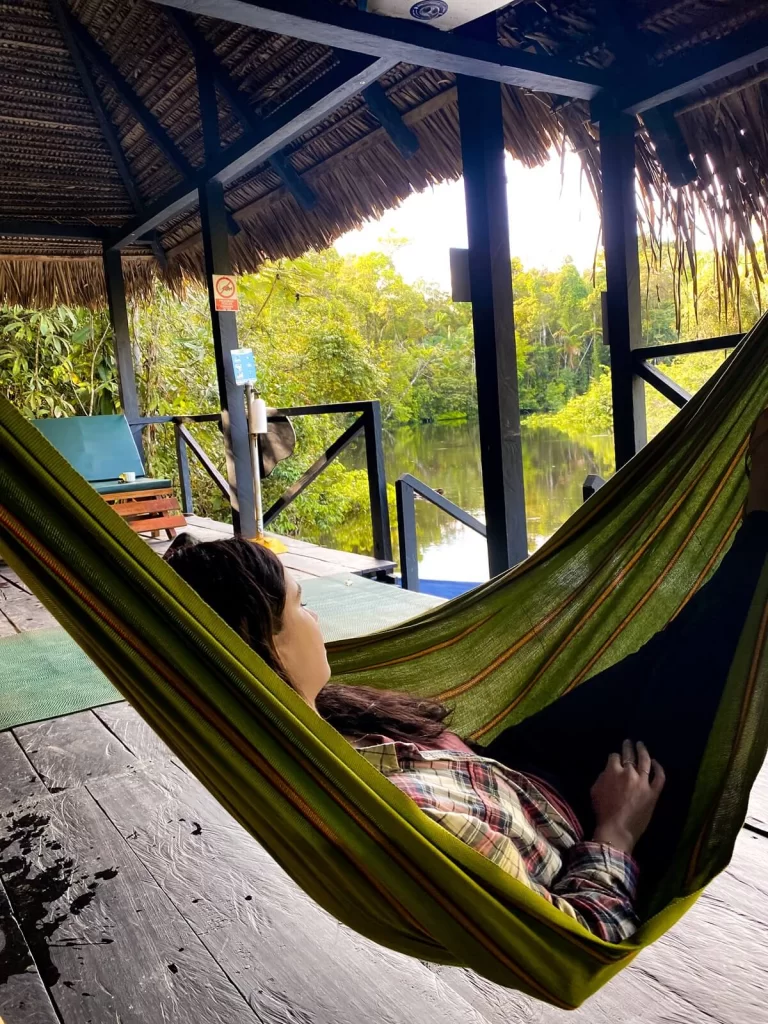
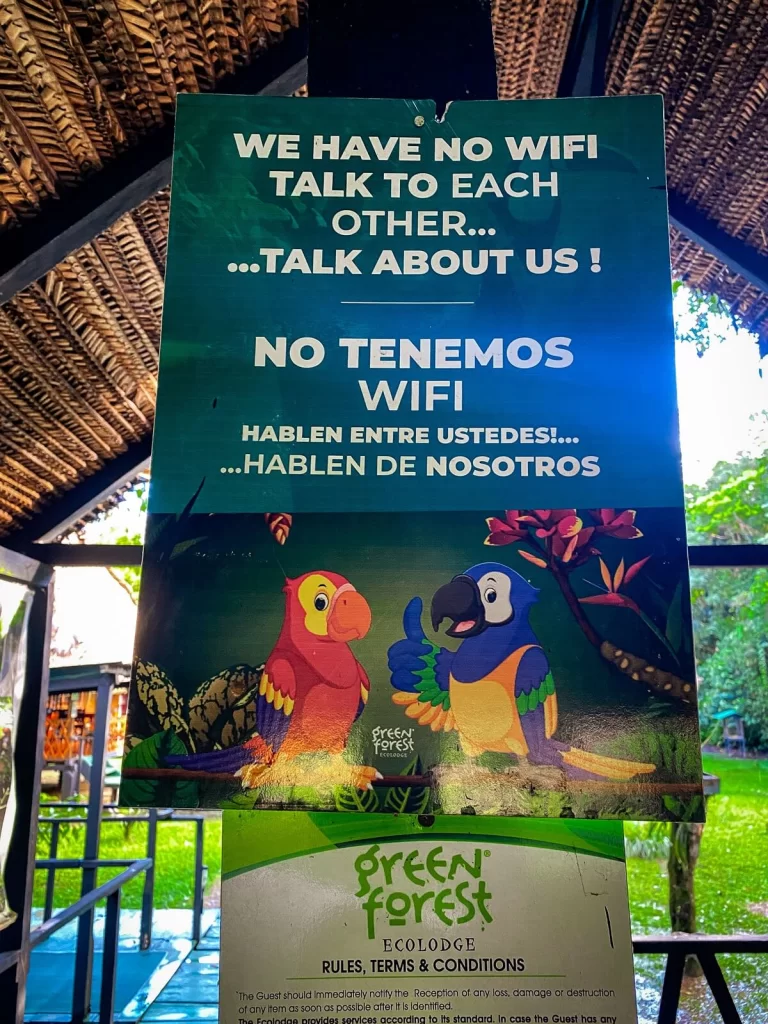
Will You Have Signal, Internet, and Electricity When Visiting the Ecuadorian Amazon
You’ll probably want to know if you’ll get any phone signal, internet or electricity during your stay in the rainforest. Having electricity is very common, and some more luxurious lodges will even have plug sockets in the bedrooms for you to charge your electronic devices. However, at most lodges you can only charge your devices in the communal area. They normally use solar panels and generators which are often switched off at certain hours of the day. For this reason, we recommend packing enough spare batteries and some portable chargers.
Now, in terms of phone signal and internet connection, there most likely won’t be much. A few days of unplugging yourself from the outside world will be refreshing though. The staff will have radios in case of any emergencies. Just make sure to let your family and friends know that you’ll be off grid for a few days with details about where you’re staying and when they can expect to hear from you.
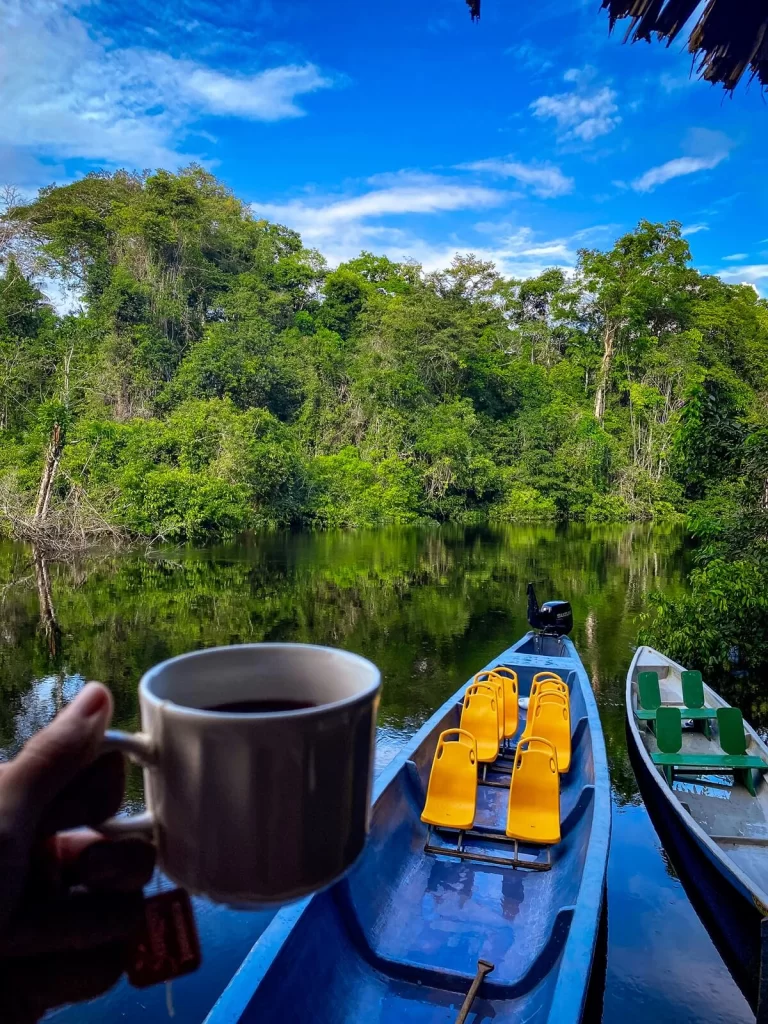
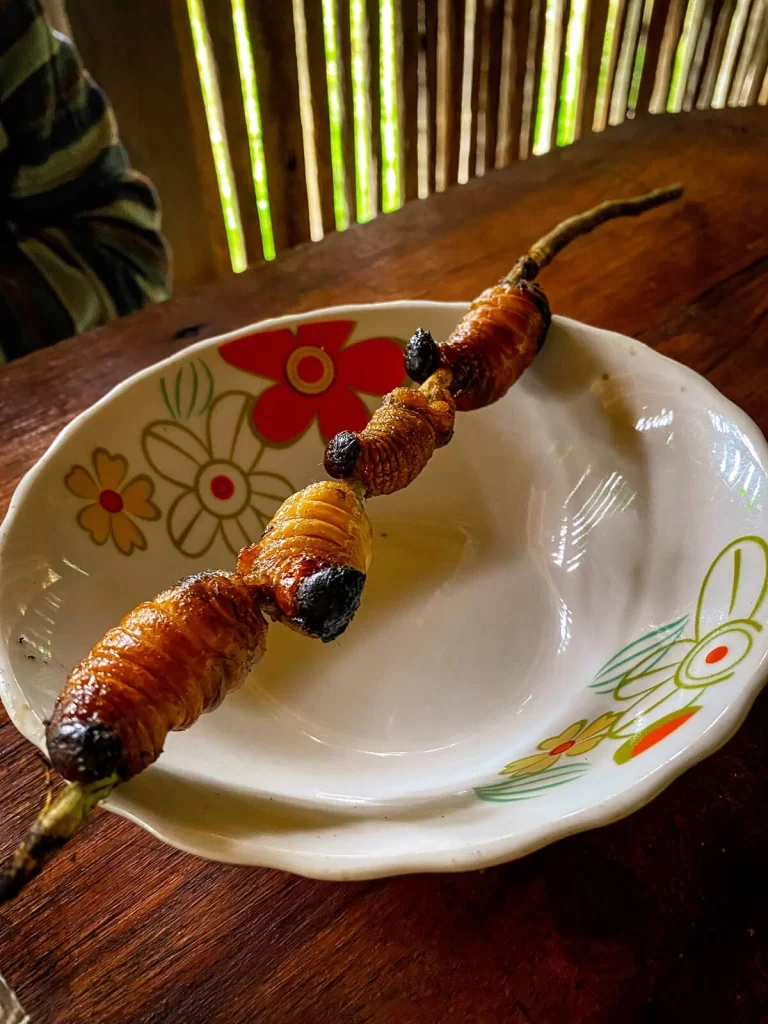
What Will You Eat in the Ecuadorian Amazon
You’ll normally be provided with three meals a day by your lodge during your stay. On your day of arrival you’ll only have lunch and dinner though. Similarly, on your last day, you’ll only get breakfast and a packed lunch.
The meals are always delicious and plentiful, so you won’t go hungry. Most lodges cater for vegetarians and vegans, but it’s worth checking with them directly if you have any allergies. There will always be coffee and tea available.
Purified water will be provided too. If you’re still wary about drinking it, we recommend having a filtered water bottle for extra protection. We personally didn’t have any issues drinking the water using our WaterWell bottles.
If you’re visiting Cuyabeno in the Ecuadorian Amazon, then you’ll likely have the chance to make ‘casabe’ bread and try some grubs when visiting the local village.
It’s worth noting that, for very obvious reasons, you cannot eat or keep food in your room. This attracts unwanted creatures and you really don’t want extra roommates, do you?
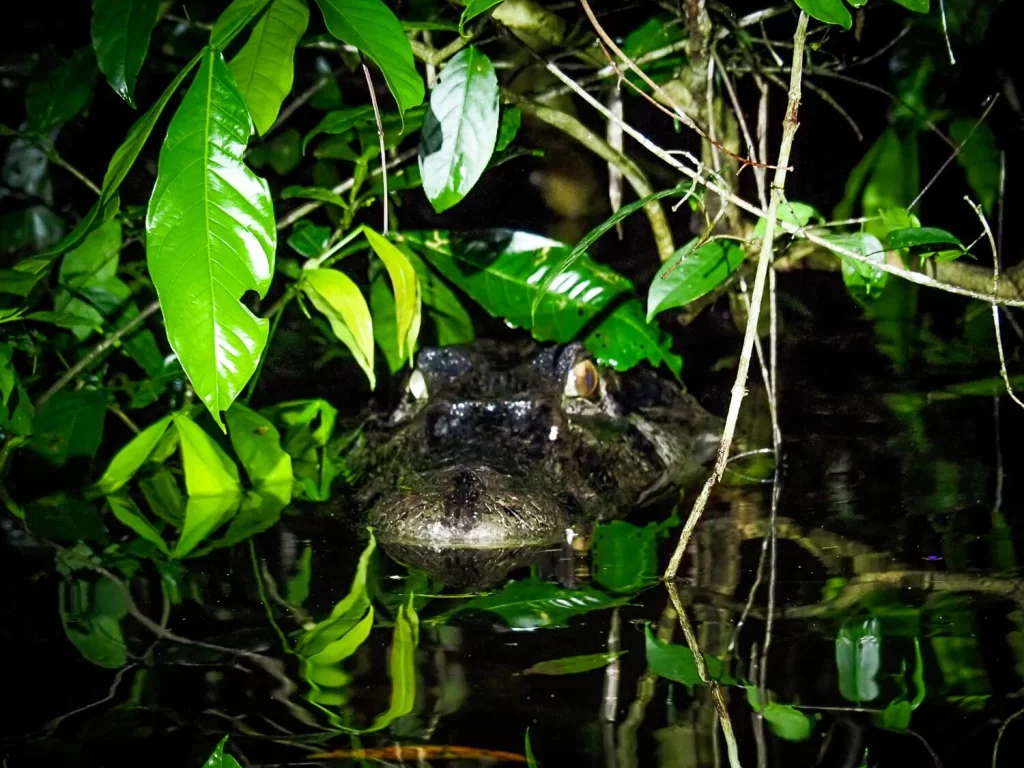
What Activities Will You Be Doing When Visiting the Ecuadorian Amazon
Most Amazon Rainforest tours in Cuyabeno offer similar activities. Depending on the length of your stay you may not be able to do them all, as we discussed in one of the sections above. Below is a quick list of common activites:
- Sunset canoe rides to the main lagoon;
- Night-time wildlife spotting from the canoe;
- Day hike through the jungle;
- Night hike through the rainforest;
- Visiting a local community;
- Meeting with a shaman;
- Early morning bird watching;
- Canoeing.
If you’d like to read more about the above activities and our personal experiences, including our wildlife encounters, then make sure to check out our dedicated activities in Cuyabeno Wildlife Reserve blog post.
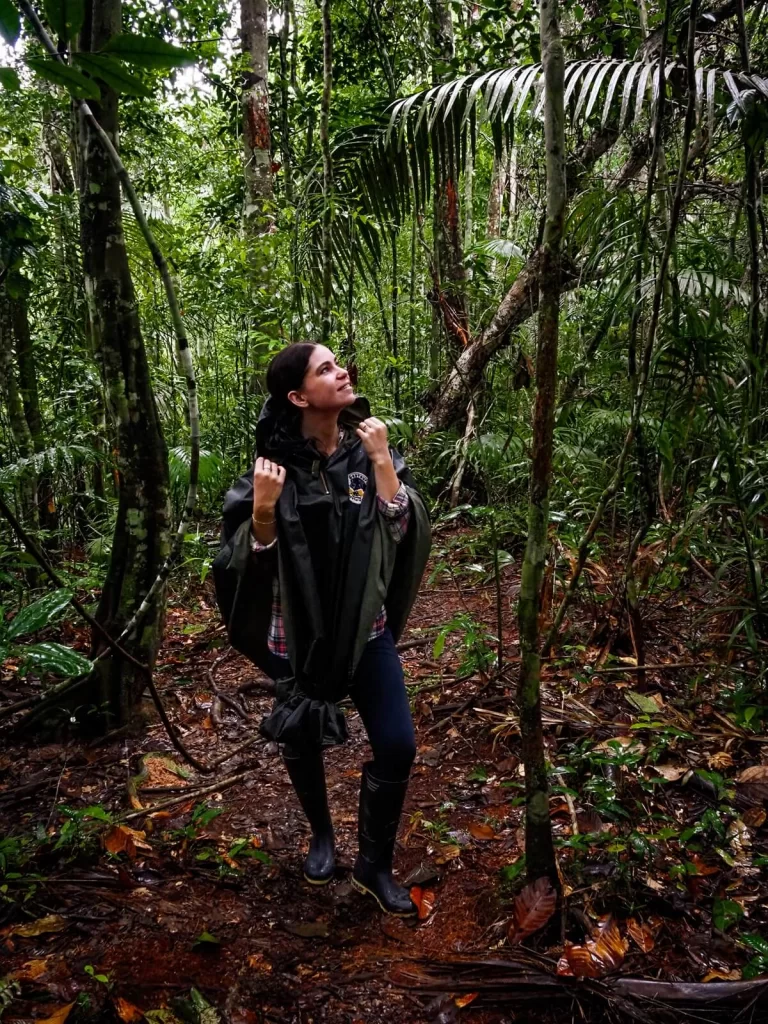
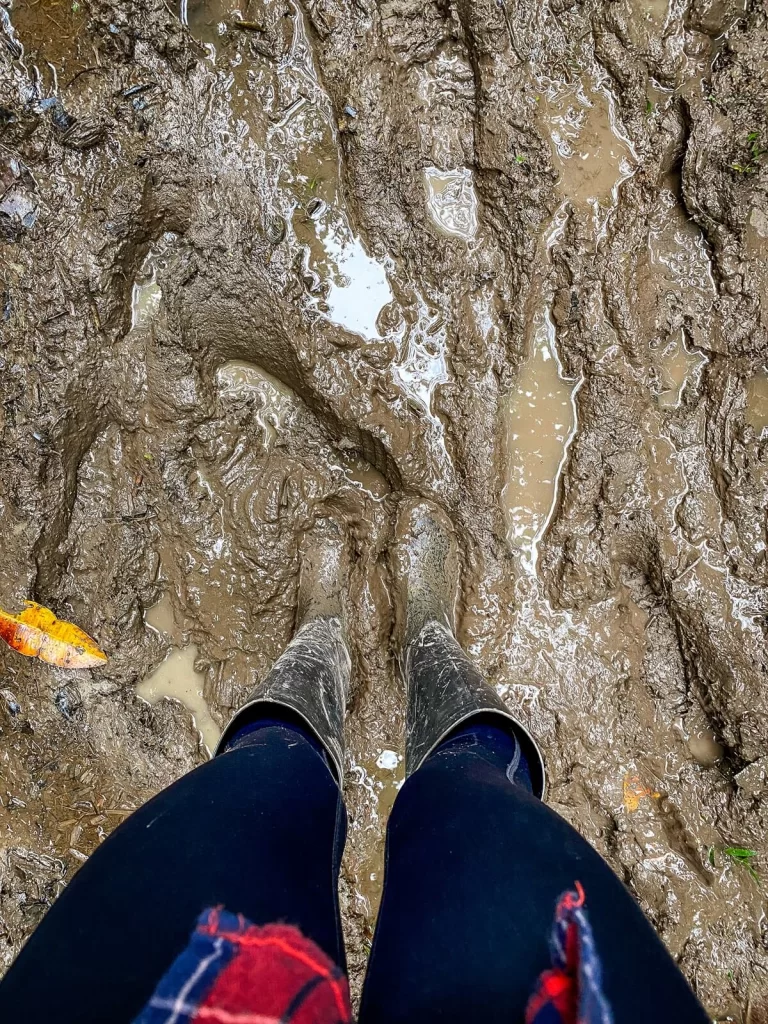
What to Wear for Visiting the Ecuadorian Amazon
As we detailed in our what to expect when visiting the Amazon Rainforest post, you’ll most likely be wearing a huge rain poncho and wellies most of the time. This is especially true if you’re visiting in the wet season. These are normally provided by your lodge which is great.
In terms of clothing items, you should think about wearing long sleeve tops and bottoms most of the time. We know that it can be pretty humid, but if you’re going hiking, then you want to protect yourself from potential bites, stings and scratches. Even if you’re just in the canoe, it’ll give you protection against the sun. Speaking of sun, don’t forget to use reef-friendly sun-cream, especially if you’re planning on swimming. You can also bring a hat and sunglasses for extra protection.
Of course, you could take some shorts and T-shirts for when you’re relaxing at the lodge. Just make sure to wear lotion-based insect repellent. Aerosols can really harm the environment.
Depending on which season you’re visiting in, the temperatures can drop overnight, so it’s worth packing a jumper for the evenings and early mornings. Generally speaking, you’ll want to pack breathable and quick drying materials. Don’t even think about wearing jeans! They’ll be too hot and if you get wet, they’ll never dry.
In terms of footwear, you’ll be mostly wearing wellies when going on excursions. Packing some flip-flops or slides is a good idea for walking around the lodge. If you wear trainers or closed shoes when you arrive, make sure that they can dry quickly in case you get caught up in rain like we did.
If you want to go for a swim, then don’t forget your swimwear and quick dry towels.
Other Useful Items to Pack when Visiting the Ecuadorian Amazon
Other useful items you should bring with you are a day pack, waterproof cover or dry bag for your electronics. We also recommend having spare batteries and portable chargers as you may only have access to a communal charging point.
Pack a pair of binoculars for wildlife spotting if you have them. Having a flashlight will also come in handy when walking around at night and on night activities.
Have your passport with you and keep it in a waterproof case at all times. Also, don’t forget to have some small change to pay the community fees with, as well as to tip your guide and the staff.
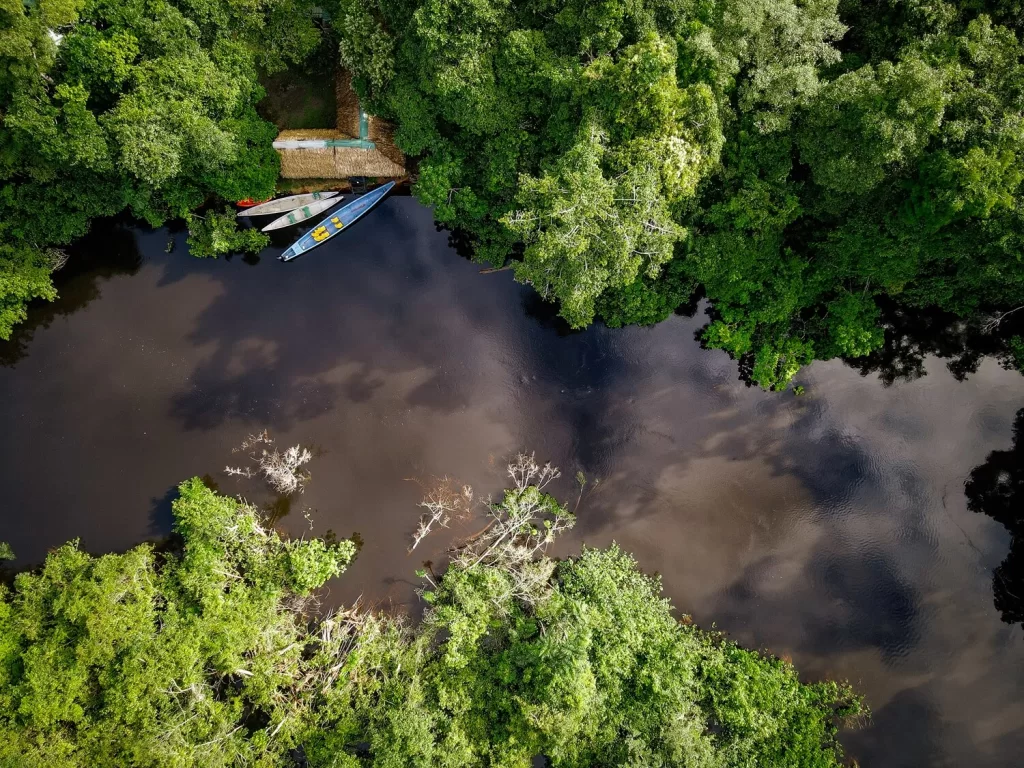
How to Be Environmentally Friendly When Visiting the Ecuadorian Amazon
As we briefly touched on, the Amazon Rainforest is a very sensitive and vital part of our planet and today it faces many issues. So, it’s very important to be a responsible traveller and not to add to the existing problems during your visit. There are many ways you can do that as listed below:
- Make sure to book a tour with a reputable company who are supporting the environment.
- Never touch or feed any of the wildlife and always keep at a safe distance. Bring a telephoto lens or a camera with zoom capabilities to capture some close-up photos of them.
- Have lotion-based insect repellent and reef-friendly sun cream. (If you only have aerosol repellent, then put it on at the lodge before your activity.)
- Very obvious, but don’t leave any waste – especially plastic – behind. You can always collect it, take it back with you and dispose of it.
- Respect the local communities. The opportunity to interact and learn about the people living in the Amazon Rainforest is amazing. However, it’s very important that you respect their way of living and traditions.
- Always stay on the designated paths during your hikes and avoid damaging the plants and wildlife.
- Don’t take anything from the Amazon with you. Whilst not taking wildlife is obvious, not taking any plant species is just as important. First of all it can disrupt the ecosystem, but you could actually face legal consequences as well!

Final Thoughts on Visiting the Ecuadorian Amazon
Visiting the Ecuadorian Amazon was without doubt one of the top travel experiences we’ve had so far. However, it’s always good to come prepared and we’re so glad that we did our research before our trip. Therefore, we hope that you got an answer to most of your questions by reading this blog post. Make sure to check out the other blog posts within our Amazon series too, which focus on how to get to the jungle, what activities you’ll be doing and some general expectations for your visit.
Have you ever visited the Amazon Rainforest before? If so, which country did you do it in? What was your experience? If not, would you visit the Amazon Rainforest in the future? Let us know in the comments below.
Now, let your adventure begin,

Our Top Travel Resources
Accommodation: For hotels we always use Booking.com and Hostelworld for hostels. We also book longer stays on Airbnb or Vrbo.
Flights: To find the best flight prices we always check Skyscanner, Google Flights or WayAway. Then we also check the airlines’ websites too for comparison.
Car Rentals: We use Discover Cars when we want to rent a car as it compares local, national and international companies.
Activities: If we book organised tours we always check either GetYourGuide or Viator.
Foreign Currency: Whenever we can we prefer to pay in local currency and for that we always use our Wise card. We can easily withdraw money from the ATM or pay by card at most shops and restaurants.
Travel Insurance: We never go anywhere without travel insurance. You never know what will happen on your trip, so good travel insurance like SafetyWing can protect you in case of injury, illness, theft and cancellations.
eSIM and VPN: To get data abroad we use Airalo which is an app that allows you to download a prepaid eSIM to your phone in over 190 countries. Make sure to have a VPN to avoid hackers accessing your personal data when using public WIFI. We use Surfshark which is the only VPN that offers one account on unlimited devices.

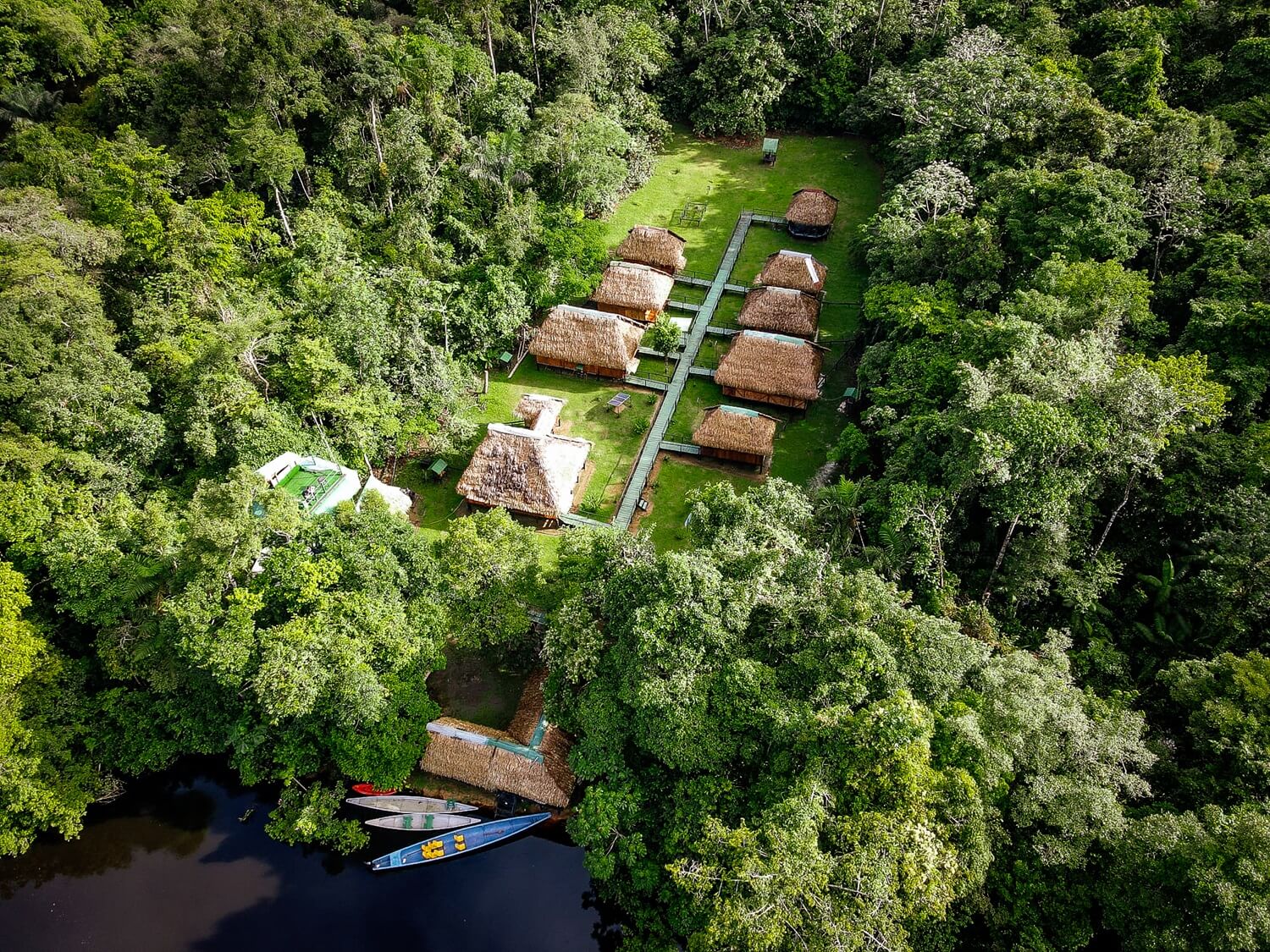
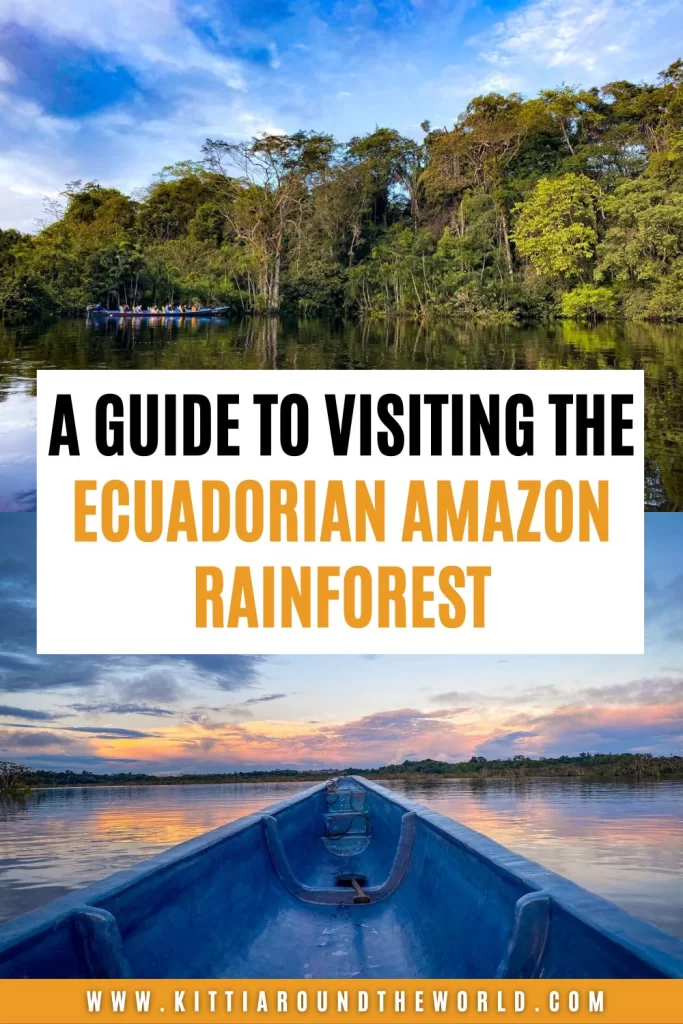
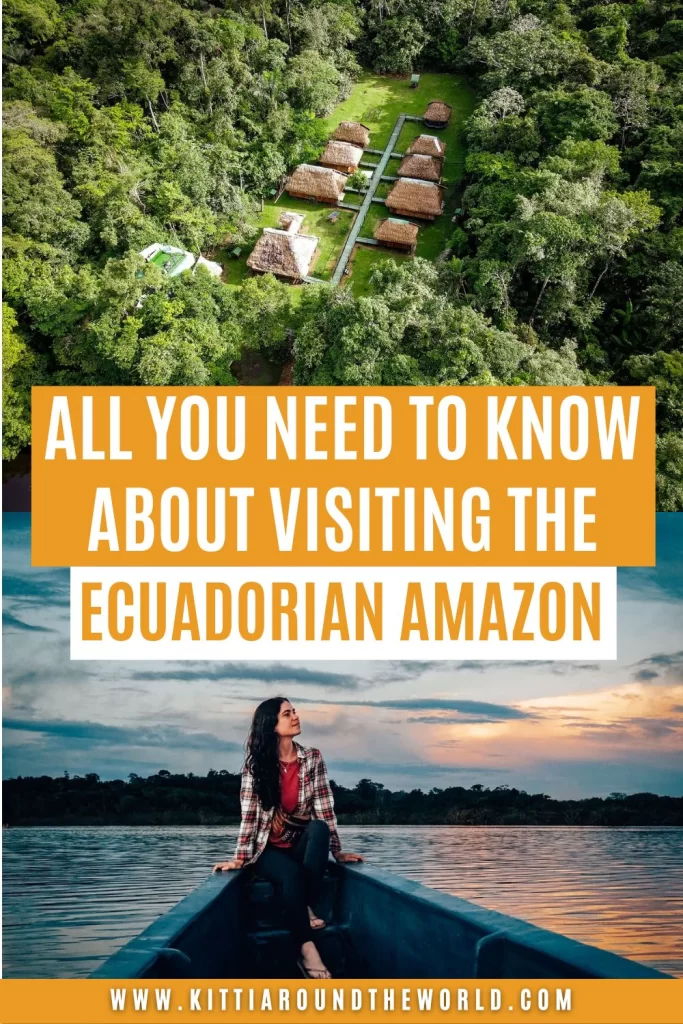
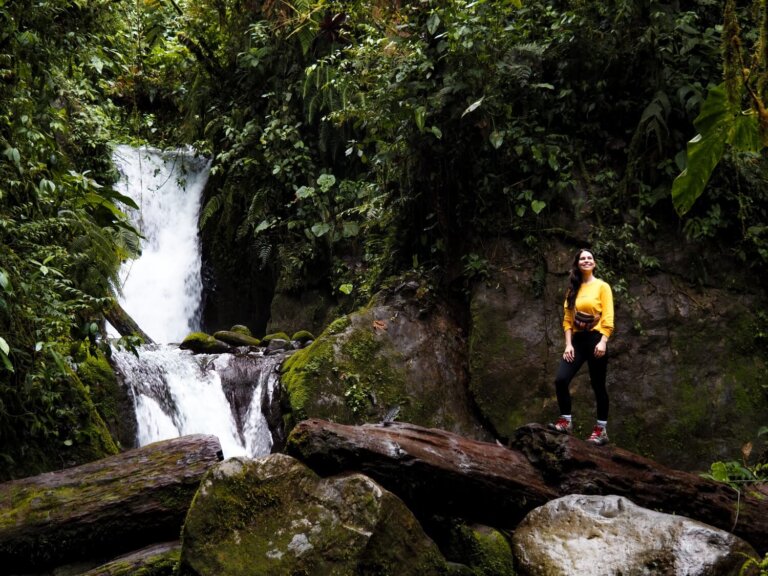
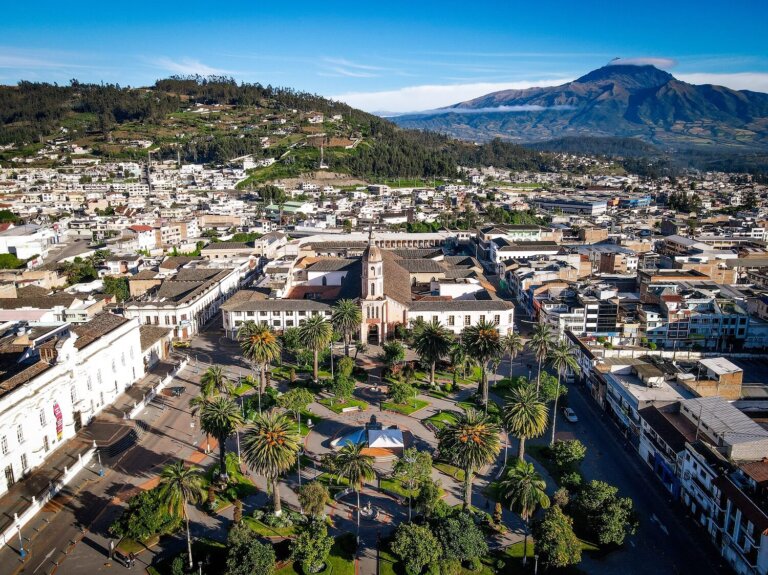
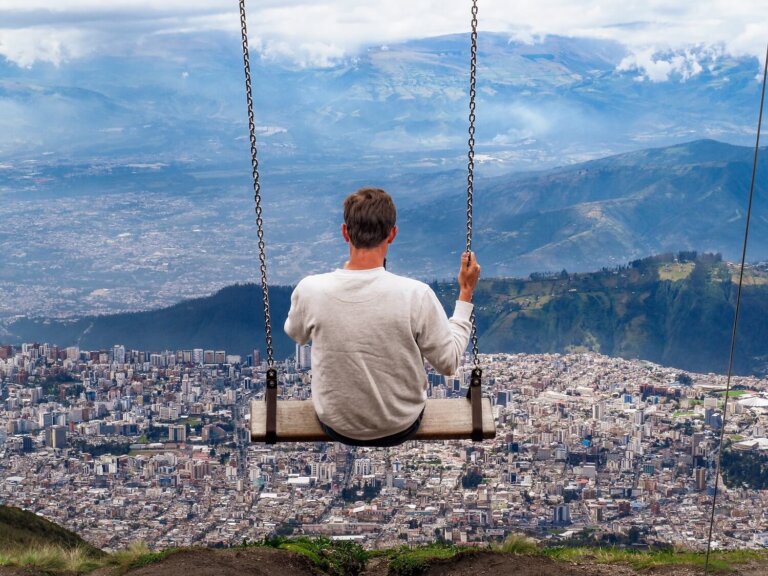
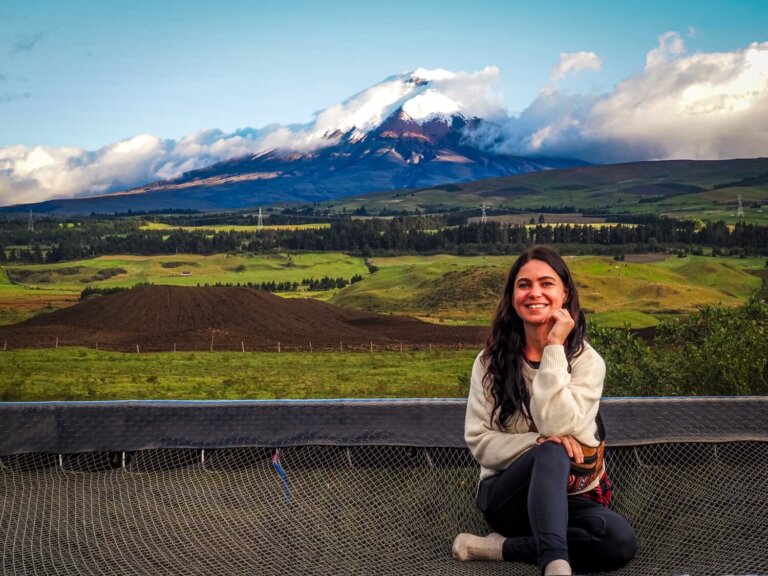
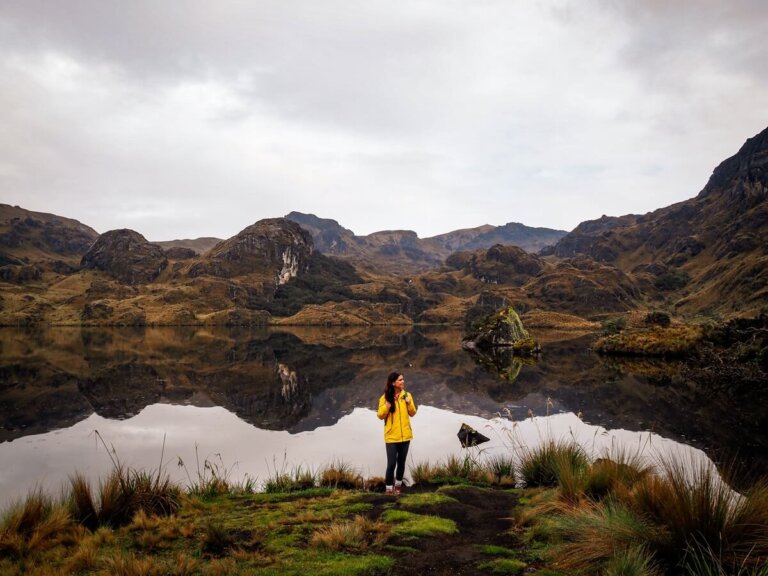
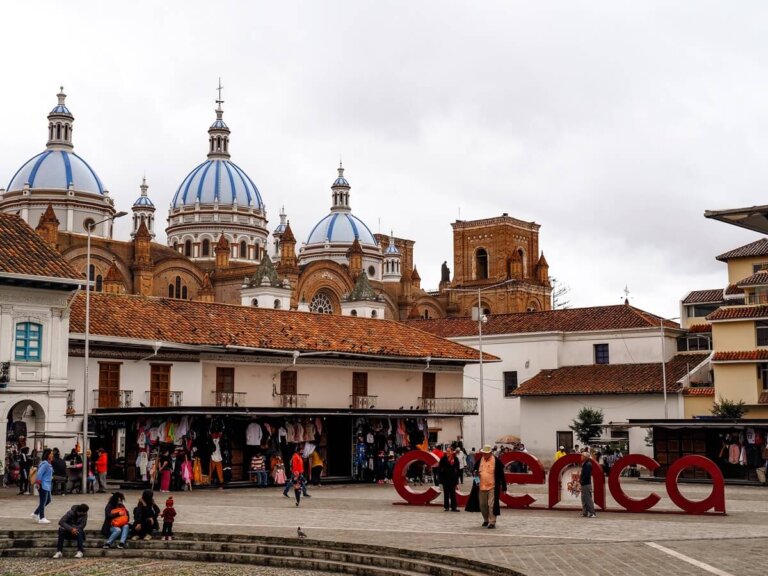
This all sounds amaaaaazing! The day hike, night hike and all the wildlife viewing would be an absolute dream holiday!
What did you think of the casabe bread and grubs? The grubs look pretty tasty in your photo!
Thank you Josy, it was a fantastic experience. The casabe bread was nice and the grubs were okay too, although I only had about half of one 😀
So many great photos! I would love to visit the Amazon! So much thorough and great information!
Thank you so much Jenn. Hope you can get to go in the near future.
When I think of Ecuador I think of Galapagos, but now the Amazon rainforest is on my radar! I love learning that the rainforest is considered “the lungs of the Earth”, and it’s just a great reminder for me and for all of us to take care of the Earth and its living beings like the trees, people, and animals. It breaks my heart knowing that deforestation and climate change are happening rapidly right now.
Thank you Hannah, I totally agree, it was definitely eye-opening to visit the rainforest and see just how amazing it is and why we should save it!
This is a really great guide. You’ve covered everything from transportation, accommodation, what to wear, packing, etc.! I’ve never been to the amazon, I’d like to some day, but the bugs, snakes, etc.. really deter me. I’ll get over it eventually!
Thanks Katelynn, I’m glad to hear that you found everything you would want to know in our post. Once you’re there you’ll forget about all the fear and will enjoy the experience!